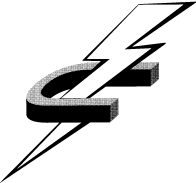
The Subatomic World
Particles Prior to Accelerators
By the mid 1930s, the understanding of the fundamental structure of
matter seemed almost complete. Decades before, Rutherford had
shown that atoms have relatively tiny but massive nuclei.
The quantum theory
had made sense of atomic spectra and
electron orbitals. The discovery of the neutron
had
explained nuclear isotopes. So protons, neutrons, and
electrons
provided the building blocks of all matter. Some
puzzles remained, however:
What holds the protons and neutrons together to form the nucleus?
What are the forces involved in the radioactive decays of nuclei that
make alpha, beta, and gamma rays?
Enter the Accelerator
To study the nucleus and the interactions of neutrons and protons
that form it, physicists needed a tool that could probe within the tiny
nucleus, as earlier scattering experiments had probed within the
atom. The accelerator
is a tool that allows physicists to
resolve very small structures by producing particles with very high
momentum and thus short wavelength. The wavelength
( )
of the associated wave is inversely proportional to the momentum
(p) of the particle
( )
of the associated wave is inversely proportional to the momentum
(p) of the particle
( = h/p),
where h = Planck's constant. = h/p),
where h = Planck's constant.
Particle experiments study collisions of high energy particles
produced at accelerators. In modern experiments, large
multi-layered detectors surround the collision point. Each layer of the
detector serves a separate function in tracking and identifying each
of the many particles that may be produced in a single collision.
The Particle Explosion
To the surprise of the physicists, accelerator experiments revealed
that the world of particles
was very rich; many more particle types similar to protons and
neutrons (called baryons) - and a whole new family of
particles called mesons - were discovered. By the early
1960s a hundred or so types of particles had been identified, and
physicists still had no complete understanding of the fundamental
forces.
The Quark Proposal
In 1964, two physicists - Murray Gell-Mann and George Zweig -
independently hit upon
the idea that neutrons and protons and all those new particles could
be explained by a few types of yet smaller objects;
Gell-Mann called them quarks. They could explain all the
 observed baryons and mesons with just three types of quarks (now
called up, down, and strange) and their
antiquarks. The revolutionary part of their idea was that they
had to assign the quarks electric charges of 2/3 and
-1/3 in units of the proton charge; such charges had never been
observed!
observed baryons and mesons with just three types of quarks (now
called up, down, and strange) and their
antiquarks. The revolutionary part of their idea was that they
had to assign the quarks electric charges of 2/3 and
-1/3 in units of the proton charge; such charges had never been
observed!
Antiquarks are the antimatter partners of quarks; they have the same
masses as, but the opposite charge from, the corresponding quarks.
When a quark meets an antiquark, they may annihilate,
disappearing to give some other form of energy.
The Standard Model
Nearly thirty years and many experiments later, the quark idea has
been confirmed. It is now part of the Standard Model of
Fundamental Particles and Interactions. New discoveries have
shown that there are six types of quarks (given the odd names of
up, down, strange, charm, bottom, and top, in order
of increasing mass). Also, there are six types of particles including the
electron, called leptons. The Standard Model accounts for
the strong, weak, and electromagnetic interactions
of the
quarks and leptons, and thus explains the patterns of nuclear binding
and decays.
The Particles Made from Quarks
The reason that fractional electric charges like those of quarks have
not been seen is that the quarks are never found separately, but only
inside composite particles called hadrons. There are two
classes of hadrons: baryons, which contain three quarks,
and mesons, which contain one quark and one antiquark.
The sample hadron tables on the Standard Model chart give a few
examples of the many known particles. Particles made from the first
five quark types have been produced and studied at accelerators. The
top quark is so massive it took many years and very
high-energy accelerators to produce it.
The top quark
was finally discovered in April 1995 at Fermilab.

The Leptons
In contrast to the quarks, any of the six leptons may by found by
itself. The electron
is the best known lepton. Two other
charged leptons, the muon, (discovered in 1936) and the
tau
(discovered in 1975) differ from the electron only in that
 they are more massive than it.
they are more massive than it.

The other three leptons are very elusive particles called
neutrinos, which have no electric charge and very little, if
any, mass. There is one type of neutrino corresponding to each type
 of electrically charged lepton. For each of the six leptons there is an
antilepton with equal mass and opposite charge.
of electrically charged lepton. For each of the six leptons there is an
antilepton with equal mass and opposite charge.

Forces and Interactions
Now we know the building blocks of matter, but we must also ask:
What holds it together? All forces are due to the underlying
interactions of the particles. Interactions come in four types:
gravitational,
electromagnetic, strong, and weak.
Gravity
is perhaps the most familiar force to us, but it is
not included in the Standard Model because its
effects are tiny in particle processes and, furthermore, physicists
have not yet figured out how to include it.
Electromagnetic
forces are also familiar; they are
responsible for binding the electrons to the nucleus to form
electrically-neutral atoms. Atoms combine to form molecules or
crystals because of electromagnetic effects due to their charged
 substructure. Most everyday forces, such as the support of the floor
or friction, are due to the electromagnetic forces in matter that resist
displacement of atoms or electrons from their equilibrium positions
in the material.
substructure. Most everyday forces, such as the support of the floor
or friction, are due to the electromagnetic forces in matter that resist
displacement of atoms or electrons from their equilibrium positions
in the material.
In particle processes the forces are described as due to the exchange
of particles; for each type of force there is an associated carrier
particle. The carrier particle of the electromagnetic force is the
photon; gamma ray is the name given a photon from a nuclear
transition.
For distances much larger than the size of an atomic nucleus, the
remaining two forces have
only tiny effects -- so we never notice them in everyday life. But we
depend on them for the existence of all the stuff from which the
world is made, and for the decay processes
that make some types of matter unstable.
 The strong
force holds quarks together to form hadrons;
its carrier particles are whimsically called gluons
because
they so successfully "glue" the quarks together. The binding of
protons and neutrons to form nuclei is a residual strong interaction
effect due to their strongly-interacting quark and gluon constituents.
Leptons have no strong interactions.
The strong
force holds quarks together to form hadrons;
its carrier particles are whimsically called gluons
because
they so successfully "glue" the quarks together. The binding of
protons and neutrons to form nuclei is a residual strong interaction
effect due to their strongly-interacting quark and gluon constituents.
Leptons have no strong interactions.
Weak
interactions are the only processes in which a quark
can change to another type of quark, or a lepton to another lepton.
 They are responsible for the fact that all the more massive quarks
and leptons decay to produce lighter quarks and leptons. That is why
stable matter around us contains only electrons and the lightest two
quark types (up
and down). The carrier particles
of weak interactions are the W and Z bosons. Beta decay of
nuclei was the first observed weak process: in a nucleus where there
is sufficient energy a
neutron becomes a proton and gives off an electron and an
antielectron neutrino. This
decay changes the atomic number of the
nucleus. Beta ray is the name given to the emerging electron.
They are responsible for the fact that all the more massive quarks
and leptons decay to produce lighter quarks and leptons. That is why
stable matter around us contains only electrons and the lightest two
quark types (up
and down). The carrier particles
of weak interactions are the W and Z bosons. Beta decay of
nuclei was the first observed weak process: in a nucleus where there
is sufficient energy a
neutron becomes a proton and gives off an electron and an
antielectron neutrino. This
decay changes the atomic number of the
nucleus. Beta ray is the name given to the emerging electron.
So now we have explained beta and
gamma rays; what about the alpha? The alpha particle
is a helium nucleus - one of the products of a nuclear fission. Fission
is the breakup of a massive nucleus into smaller nuclei; this occurs
when the sum of the masses of the smaller nuclei is less than the mass
of the parent nucleus. This is a residual strong interaction effect.
What Questions Remain?
The Standard Model answers many of the questions of the structure
and stability of matter with its six types of quarks, six of leptons, and
the four force types.
But the Standard Model leaves many other questions unanswered:
Why are there three
types of quarks and leptons of each charge? Is there some pattern to
their masses? Are there more types of particles and forces to be
discovered at yet higher-energy accelerators? Are the quarks and
leptons really fundamental, or do they, too, have substructure? How
can the gravitational interactions be included? What particles form
the dark matter in the universe?
Questions such as these drive particle physicists to build and operate
new
accelerators, so that higher-energy collisions can provide clues to
their answers.
|



